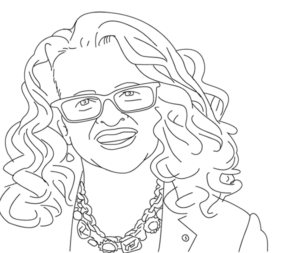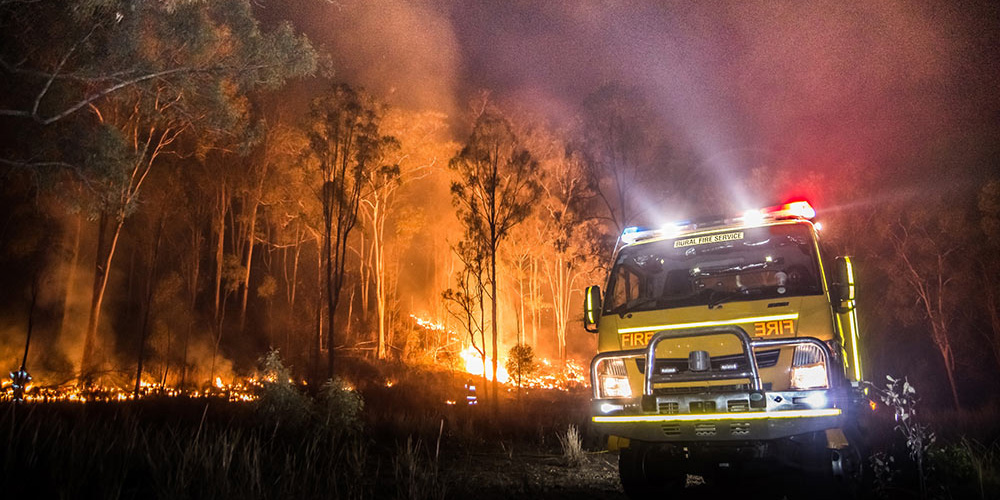9 May 2022
Policymakers are futurists. In designing and implementing policies and programs that aim to prompt and foster particular behaviours, policymakers engineer future outcomes in society. In this sense, policymakers design the future. It is a daunting space to inhabit, and also a hopeful one.
There are many tools policymakers can use to glimpse the future and to design towards it. As the world continues to reel in response to systemic shocks, no tool for the future has more potential at this point in time than cybernetics.
As we reflect on the events of the past three years it is clear that we are still processing – individually and collectively – what has happened. And it is not over. We can’t yet know exactly how we have been changed – by the pandemic and other recent events – but what we do know is that these past three years have shaped and reshaped our bodies, our homes, our families, our daily lives, our communities, our schools, our companies, our cities and even our governments. These events have impacted our ideas about data, privacy, borders, danger, vaccinations, regulations and whom among our public figures is worthy of our trust.
We can learn a lot from how we have responded to all of this so far. But, even on the eve of a federal election, there remains a persistent lack of clarity about what the future could or should be.
This moment feels like an opportunity to do more. And if so, where do we start?
Systems thinking
To start thinking about the future differently we can contemplate the perspective of Australia’s First Nations people. The concept of “always was, always will be” offers a through line from past to present to future and makes clear both persistence and responsibility. It directs us to meditate on the shape of the future, and think about the tools and approaches we might need to cultivate in order to succeed in it.
To help with this task, I often think of a quote by science fiction author, William Gibson: “the future is already here, it’s just unevenly distributed”. Gibson’s provocation suggests that the future is not a destination or an event yet to transpire, but rather is a collection of activities, encounters and even things that we can see, if we so choose. In this way, the future is knowable, even observable in our present, if we pay the right attention.
Paying attention to our world in 2022 and trying to observe the future, we see that the future is not a technology, or a set of behaviours or demographic patterns. It is clear that recent events – pandemic, bushfires, war – are not simple, single events. They are manifestations of complex adaptive systems; systems that encompass ecological, cultural, social, economic and technological dimensions. The challenges of designing the future in a world full of such systems feels acute.
Ordinarily, most systems remain invisible to the general public.
Prior to the pandemic, for instance, most of us didn’t spend a lot of time pondering global supply chains, or the complex dance of delivery services, or the interconnections of state and federal regulatory frameworks. But since the start of the pandemic, we have seen many systems rendered in plain sight, and implicated in our everyday lives. In part, the failure of these systems is what made them visible to the public: systems that delivered food to our grocery stores, systems that delivered educational content to our children, systems that made sense of viral loads and population epidemiology; systems to obtain, certify and distribute vaccines; systems that shut down our borders; systems that spread factual news; even the systems of electricity, telephony and the internet. We saw these systems because they stopped working.
This sudden knowledge of systems sits atop other knowledge that we gained in the bushfire season of 2019-20. That season made unforgettably visible a different set of systems – fire, water, rain, wind, smoke, firefighters and fire safety apps, and of course climate and climate change.
As we look to a future rich with ever more such systems, policymakers will need to imagine new models of engagement and governance, new kinds of critical thinking and critical doing, and new sorts of training. How do we teach ourselves to see these systems all the time, not just when they are broken?
Cybernetic solutions
This brings us back to cybernetics. In the 1940s, at a not dissimilar moment of upheaval and change, an approach to systems as a building block of the future emerged. That approach was called cybernetics. In close conversation with the rise in computing and technological innovation, and against the backdrop of the destructive power of nuclear weaponry, cybernetics was an intellectual wellspring for the twentieth century. Scratch the surface and somewhere there will be a link to cybernetics. It was more than just an approach to the future, it was also inspiration for a multiplicity of different futures and a toolkit to get you there.
One of the key concepts in cybernetics that has persisted is the idea of feedback – where the output of a system is also its future input. In cybernetics, feedback was married with circular causality, which focused on reciprocal relationships between the ecological, human and technical pieces of the system.
In a future rich in dynamic and adaptive systems, we will need to pay particular attention to feedback, feedback loops and reciprocities – to the ways that they are constituted and constitutive. We will need to see each system and its dynamics; not just its pieces but the ways in which they are assembled, and by whom. We will need to remember and be reminded that every system has a history and set of reasons it came to be that way. Knowing how to ask about the boundaries of a system, its interdependencies and affordances are critical skills; as is being able to determine who is erased or rendered mute or invisible in a system.
Our responsibility then is to ensure that as we contemplate future systems, we do so alive to the fact that they will embody a politic, and conscious of the fact that we can shape that self-same point of view. We should not adhere to the notion that technology is neutral and should instead encourage debate about the values in technology and the systems that would encompass them. This is as true for a regulatory framework managing electronic vehicle charging stations as it is for the next generation NBN network, or telehealth rebate schemes, among many, many other things. We will need to actively create spaces for such conversations and equip ourselves to have them.
When we launched a new School of Cybernetics at the Australian National University in January 2021, it was to deeply investigate all of this and more. It is the first school of cybernetics in Australia, and the first new school of cybernetics globally in two generations. And whilst much has been written about the theory of cybernetics, far less has been written about the organisations that do it well. So, we have been finding our way. And we have been doing so in close conversation with a range of people including policymakers, with a significant proportion of our graduates being current members of the public service.
Approaching future systems
The futures we design will require different models of leadership, critical thinking and critical doing, and different kinds of training experiences than those currently at hand. We need to fill this gap. We need to help citizens and organisations approach future systems, and to critically frame the role of government, industry, and civic and civil society in the creation, management, regulation, and security of such systems. Much like the cybernetic conversations of the 1940s, we need as many voices and points of view as we can gather together. In the School of Cybernetics, I like to believe we are doing some of that work. I hope others will join us.
Cybernetics is an important approach to the “systems-full” future, and it strikes me that there is an opportunity to reappraise and refit it for a world of twenty-first century dynamic, complex systems, and for the people who will regulate them. For policymakers, this is an invitation and a challenge. Cybernetics is an articulation of a system with dynamic feedback loops, which brings together humans, increasingly smart computing, and the broader ecological world. It is also an approach to building such complex systems that favours many voices, unfolding conversations, and the necessity to build new knowledge.
In 2021 Distinguished Professor Genevieve Bell was asked to deliver the Garran Oration. This piece draws on that speech.
Distinguished Professor Genevieve Bell AO FTSE FAHA is a renowned anthropologist, technologist, and futurist. Genevieve is currently the Director of the School of Cybernetics and the 3A Institute (3Ai) at the Australian National University and also remains a Vice President and Senior Fellow at Intel Corporation. She is also a non-executive director of the Commonwealth Bank of Australia.
Image credit: Stuart Shaw/iStock
Features
Ehsan Noroozinejad Farsangi
José-Miguel Bello y Villarino
Subscribe to The Policymaker
Explore more articles
José-Miguel Bello y Villarino
Cliff Eberly and Wenqian Gan
Features
Ehsan Noroozinejad Farsangi
José-Miguel Bello y Villarino
Explore more articles
José-Miguel Bello y Villarino
Cliff Eberly and Wenqian Gan
Subscribe to The Policymaker








